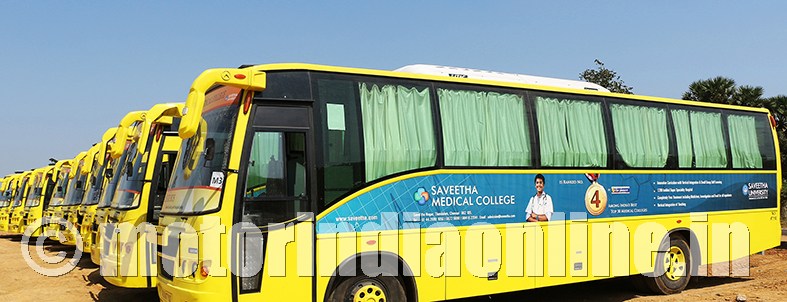This section focusses on how air-conditioning in buses can be efficacious in providing improved travel experience and retain passengers with the bus transportation against all odds. A proper cost-benefit analysis can help bus operators ward-off their apprehensions on the anticipated cost nightmares in operating A/C buses.
Air-conditioned environments have become crucial to modern lives, a ‘necessary luxury’ indeed. The automobile cabins in which we spend considerable part of our lives are our ephemeral abodes. The mobile air-con systems offer comfort and solace from external weather uncertainties while on the move.
The use of Heating, Ventilation, and Air-Conditioning (HVAC) systems in buses is getting standard these days, at least in developed countries, to enable an optimum, safe and pleasant environment for the passengers and bus driver. Air-conditioned buses are hardly seen as an indulgence of luxury, but is being realized as empowering and endowing aspect of commutation, especially in public transport.
Apart from providing soothing ambience of around 22°C whatever the outside temperature is, A/C buses offer much quieter ride experience. Thanks to their fully sealed window panels, the interior remains insulated from road noise and dust, while also offering seamless gazing experiences for commuters. This kind of value-added transport remains a crucial proposition for the bus transport to retain its commuter base, as against the likes of private cars, taxis, metro trains, and even commercial airliners in inter-city travels.
However, the elephant in the room is the added unit, operational, and maintenance costs of A/C buses, especially in cost-sensitive countries like India, thereby preventing its penetration in the bus industry. Although passengers appreciate the value-addition through air-conditioning, bus operators are faced with a dilemma of whether additional costs win over actual benefits.
Gone are the days when additional power generators were used to run HVAC systems in buses. Present-day air-con compressors are characterized by lightweight, compact and highly robust design, guaranteeing a wide speed range and an efficient operating performance (including auto cut-off climate control) depending on the specific needs of city buses and inter-city coaches. Thus, fuel-efficiency is no more lavishly compromised.
On the other hand, air-con can be a strong pull factor to attract commuters and command higher revenue for the operators in the long run. Perhaps, a scientific cost-benefit analysis on air-con bus operations can help STUs and private operators realize the head start we are talking about!
Sustainable air-conditioning for buses
However efficient the systems are, air-conditioning in automobiles has a huge impact on climate change. The use of climate-damaging refrigerants and the additional energy consumption of AC systems are clearly in a contradiction to the green image buses usually have. The concern here is significant, considering the large volume of cabin the system has to air-condition, in addition to the round-the-clock operations in public transportation.
A/C buses almost exclusively use fluorinated greenhouse gases (f-gases) as refrigerants, whose global warming potential (GWP) is as high as 1,430 times than that of CO2. There occurs inevitable direct emissions through leakages, about 13-15 per cent of refrigerant every year, which is roughly equivalent to the emissions of over 100,000 efficient cars! F-gases also fall under greenhouse gases that are to be reduced under Kyoto Protocol.
As an eco-friendly and cost-effective alternative to the conventional refrigerants, CO2 – the widely known greenhouse gas – is being used in some developed countries. Carbon-di-oxide has the lowest GWP of all the refrigerants, and is naturally occurring in the air due to industrial emissions, has no additional impacts on climate.
Of course, CO2-based air-con systems are more expensive than their conventional rivals. But higher investment costs will be paid back within a few years due to less operation and maintenance expenses. They consume up to 25 per cent less energy with the same refrigerating capacity. CO2 is neither toxic nor inflammable, thus way safer to use in buses than other refrigerants.
With public incentive programs for environment-friendly buses kicking-in in India, the criteria of sustainable air-conditioning must be mandated as well. State agencies and STUs should consider including CO2 as A/C refrigerant in their tenders. The hybrid and electric buses we have seen so far are anyway expensive and heavily subsidized, so little extra-premium on CO2-based HVAC technology wouldn’t topple their prospects. Leading OEMs should consider including natural refrigerant CO2 in their checklists while offering zero-emission buses in the market.
This may seem way too ahead for the markets like India, but considering the rising demand for A/C buses in the years to come and craze for emission-free public transport getting firmer, an earlier shift to natural refrigerant CO2 can ensure long-term sustainability.

